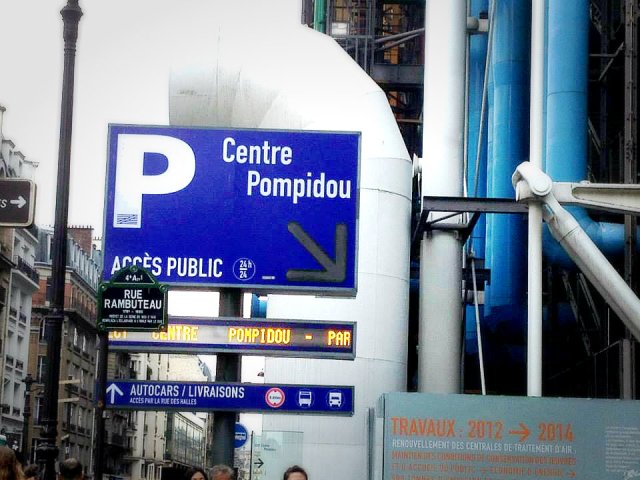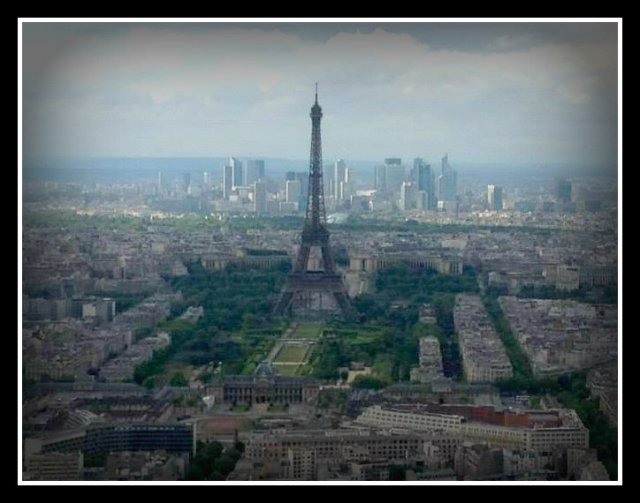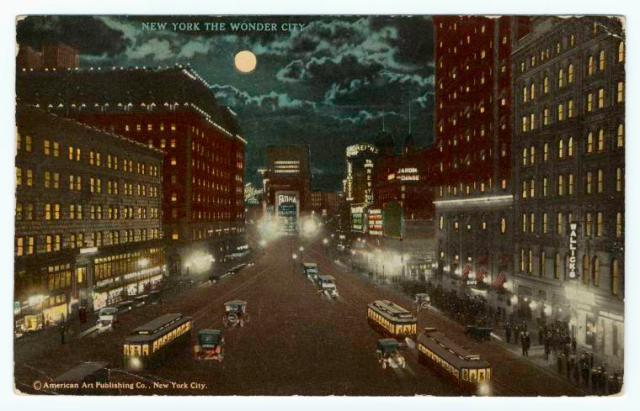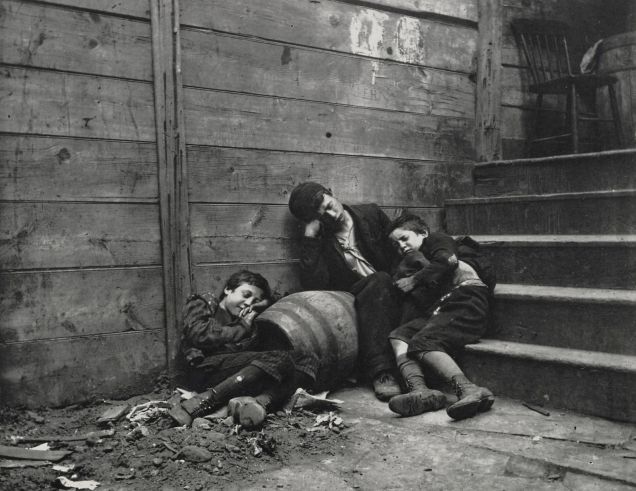Catriona Olivia Moore : 111539677
The Evolution of food in New York City from the 19th Century

6 Examples of the New York City food scene.(L-R Street vendor, donuts, pastrami sandwich, pretzel, pizza and times square)
When we think about the grand city of New York today and everything that New York stands for, food is always a focal point that is thought of. Between the classic street food vendors, fast food ‘joints’ and famous restaurants, there is an abundance of places to dine around the city of New York.
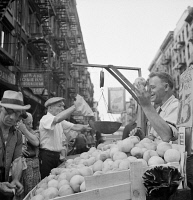
A typical New York market c.1942 (Granger.com,2014)
Street food has seen an enormous transformation since the 19th century. The streets used to be surrounded with market stalls and small-scale street-vendors who would sell produce to people out of necessity, whereas now it is more a want. As for the diversity of food in New York, this dates back as far as the early 19th century.
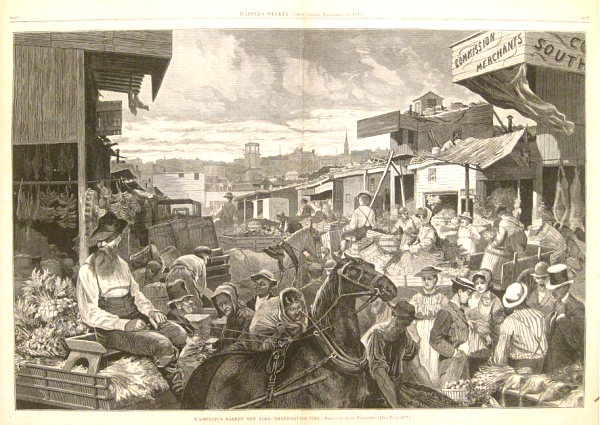
A scene from Washington market in Manhattan, circa 1970.(Nona Brooklyn | What’s Good Today?, 2014)
“The Erie Canal was opened in the 1820s. That allowed us to start shipping a lot of food in from the interior of the country, and we shipped a lot of goods back. We started importing pineapple from Florida and the Bahamas at that time. We’ve always had an obsession with importing food and moving it around the country.” (Nona Brooklyn | What’s Good Today?, 2014)
This imported produce was sold in the nearby marketplaces, though now you might find that the marketplace has almost disappeared, yet the street vendors are still very much in force.

A trio of pictures of Katz’s Delicatessen on New York’s Lower East Side, from the opening in 1888 to present day.(Lower East Side New York, 2010)
As well as the infamous street food around the streets of New York, one can’t help but notice the infatuation that New Yorker’s have with fast food restaurants. There are literally hundreds of fast food ‘joints’ around New York, but the most noted have to be the famous Delicatessens such as Katz’s. These fast food restaurants are hard to miss with the abundance of neon lights outside, which help to draw in more customers. Electrical lighting has indeed been one of the factors in the emergence of modern urban environments. (Ucc-ie.blackboard.com, 2014)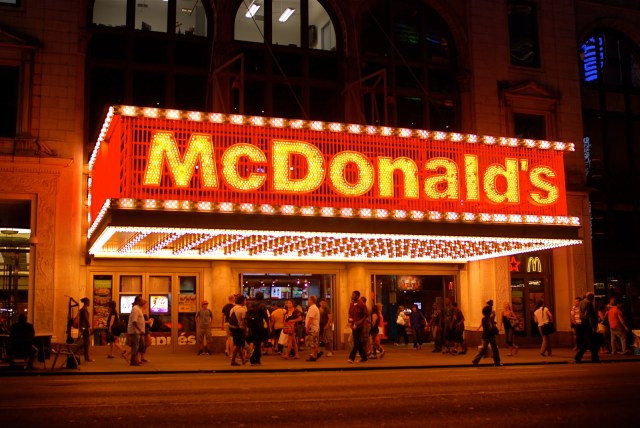
The largest McDonald’s Restaurant in America, situated on Broadway & 42nd Street, New York. A great example of bright lights attracting customers inwards.(C., 2010)
“If you build buildings with lights outside, you can make them indefinite, and then when you’re through with using them you shut the lights off and they disappear.” ( Andy Warhol , 1975)
The food affair that New York has, has always been amazingly strong and there is no sign of it disappearing, but continuing to grow.
Bibliography
C., N. (2010). NYC ♥ NYC: New York’s Glitziest Fast Food Restaurant. [online] Nyclovesnyc.blogspot.ie. Available at: http://nyclovesnyc.blogspot.ie/2010/09/new-yorks-glitziest-fast-food.html [Accessed 5 Nov. 2014].
Cart, E. (2014). New York Street Food Cart. [online] Dreamstime. Available at: http://www.dreamstime.com/stock-image-new-york-street-food-cart-image20960571 [Accessed 5 Nov. 2014].
eGullet Forums, (2014). eG Foodblog: johnder, slkinsey, weinoo (2011) – A tale of two boroughs – Food Traditions & Culture. [online] Available at: http://forums.egullet.org/topic/136744-eg-foodblog-johnder-slkinsey-weinoo-2011-a-tale-of-two-boroughs/ [Accessed 5 Nov. 2014].
Granger.com, (2014). Image Search – Food – The Granger Collection. [online] Available at: http://www.granger.com/results.asp?search=1&screenwidth=1680&tnresize=200&pixperpage=40&searchtxtkeys=food&lastsearchtxtkeys=&withinresults=&searchphotographer=&lstformats=&lstorients=132¬txtkeys=&captions=&randomize [Accessed 5 Nov. 2014].
Lower East Side New York, (2010). Katz’s Delicatessen – Lower East Side New York. [online] Available at: http://lowereastside.org/listing/katzs-delicatessen-of-houston-street-inc/ [Accessed 5 Nov. 2014].
Nona Brooklyn | What’s Good Today?, (2014). Bear Meat, Ice & Celebrity Chefs: A Look at NYC’s 19th Century Food Scene. [online] Available at: http://nonabrooklyn.com/bear-meat-ice-celebrity-chefs-a-look-at-nycs-19th-century-food-scene-and-a-pre-industrial-dinner-at-the-farm-on-adderley/#.VFkSCfmsV1A [Accessed 5 Nov. 2014].
Picturetherecipe.com, (2013). A Food Tour Of Hell’s Kitchen, New York | Picture the Recipe. [online] Available at: http://picturetherecipe.com/index.php/recipes/a-food-tour-of-hells-kitchen-new-york/ [Accessed 5 Nov. 2014].
Ramallo, D., Ramallo, D. and profile, V. (2011). Runs 4 Food: New York Food: Carnegie Deli. [online] Runs4food.blogspot.ie. Available at: http://runs4food.blogspot.ie/2011/11/new-york-food.html [Accessed 5 Nov. 2014].
Silver Nutrition, (2013). New York city nutritionist for busy new yorkers. [online] Available at: http://www.silvernutrition.com/new-york-city-nutritionist-for-busy-new-yorkers/ [Accessed 5 Nov. 2014].
Ucc-ie.blackboard.com, (2014). [online] Available at: https://ucc-ie.blackboard.com/webapps/blackboard/content/listContent.jsp?course_id=_8608_1&content_id=_167566_1&mode=reset [Accessed 5 Nov. 2014].





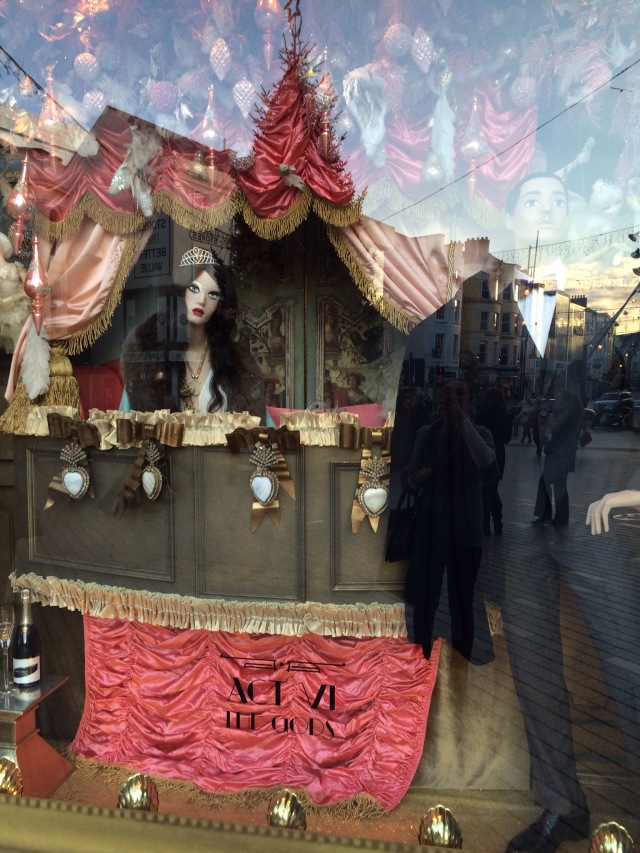 </a
</a



